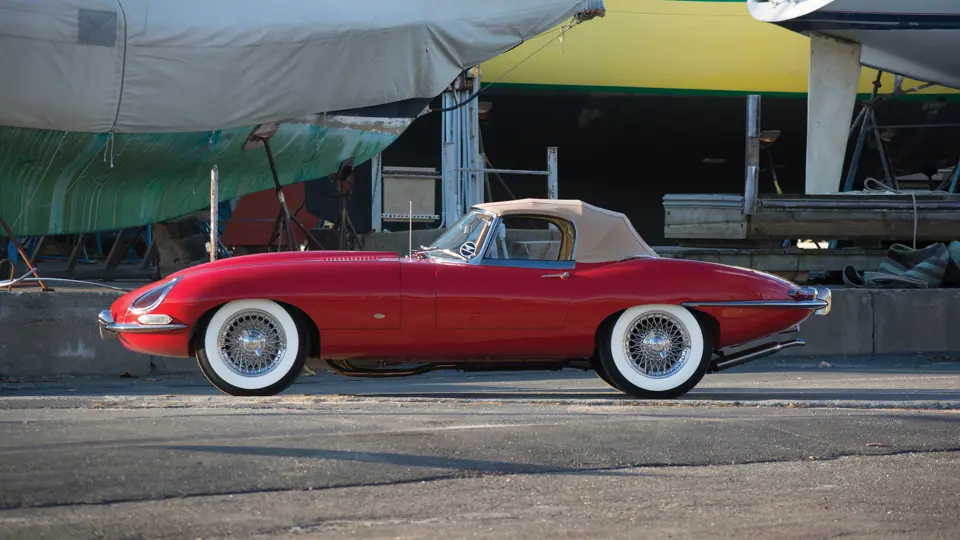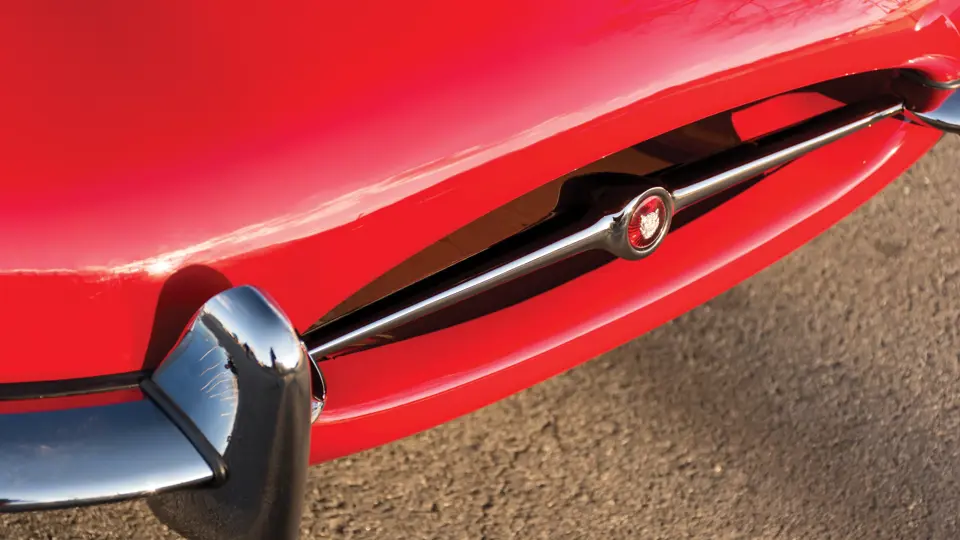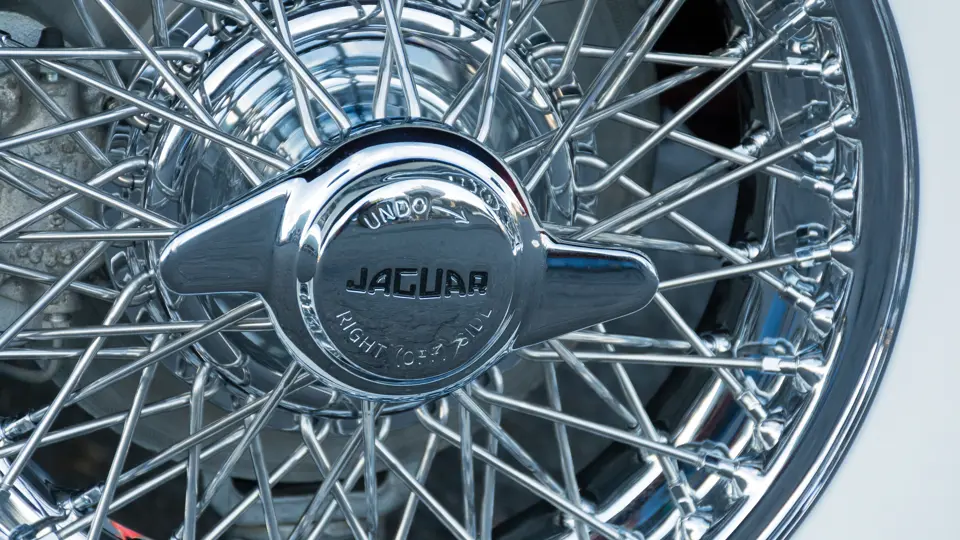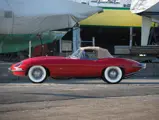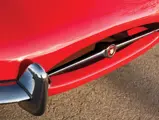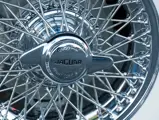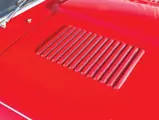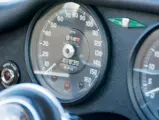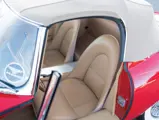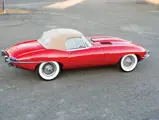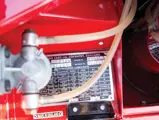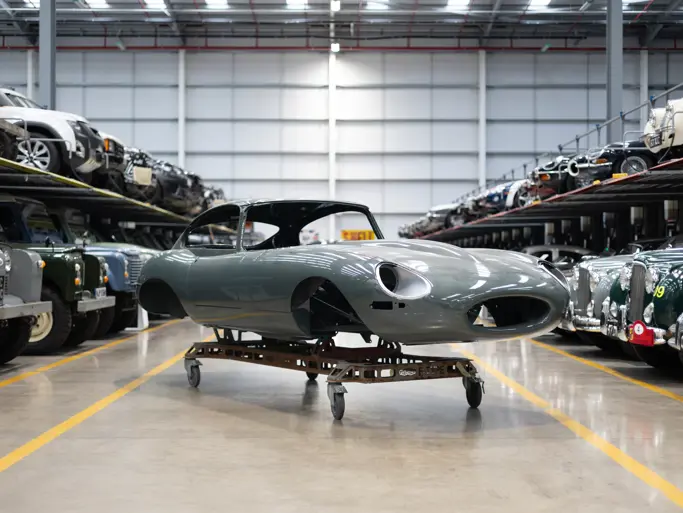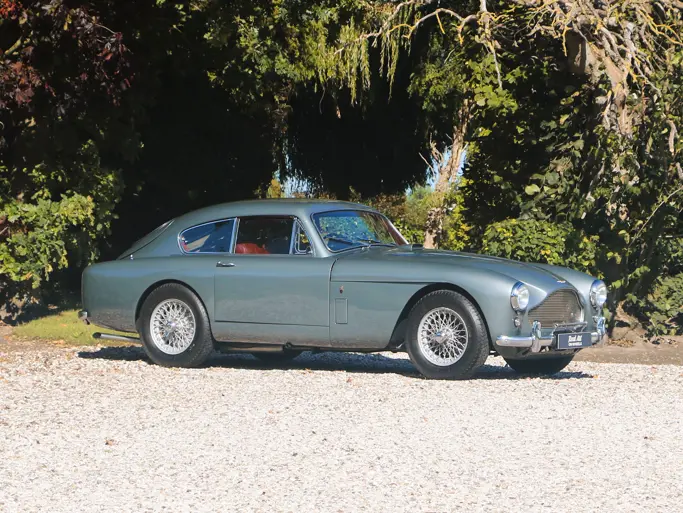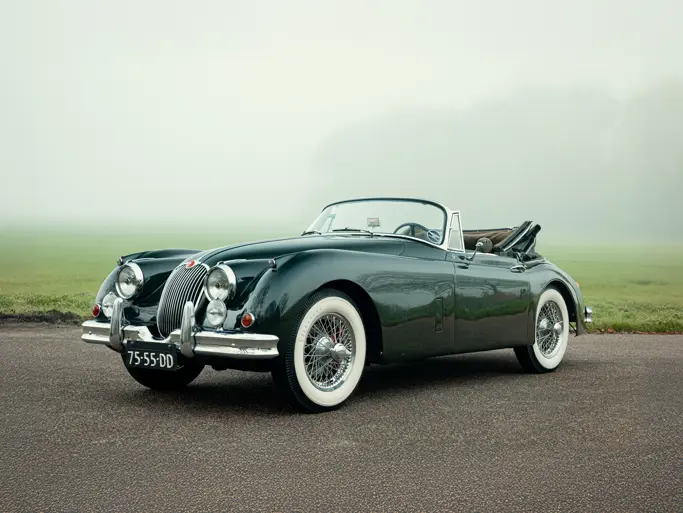
1961 Jaguar E-Type Series 1 3.8-Litre Roadster
{{lr.item.text}}
$330,000 USD | Sold
{{bidding.lot.reserveStatusFormatted}}
- Rare and desirable early example with flat floors, welded bonnet louvers, and external bonnet latches
- Gorgeous in Carmen Red over a Biscuit leather interior
- Concours-winning, 100-point JCNA, Reggie Ray restoration
- Matching numbers, confirmed by a Jaguar Daimler Heritage Trust Certificate
265 hp, 3,781 cc DOHC six-cylinder engine with three SU carburetors, four-speed manual gearbox, independent front suspension with double wishbones, torsion bars, and a sway bar, independent rear suspension with coil springs, double wishbones, and a sway bar, and four-wheel hydraulic disc brakes. Wheelbase: 96 in.
Jaguar’s E-Type was an immediate hit, from its introduction at the March 1961 Geneva Motor Show until its end in 1974. Autocar said it was a “breakthrough in design of high-performance vehicles.” At its New York introduction a month later, Road & Track called it “every bit as exciting as the XK120 was” at its 1948 debut, while Car and Driver succinctly remarked that it was “sensual and elemental.”
Unlike its predecessors, the XK120, 140, and 150, the E-Type did not have a separate chassis frame. Its monocoque body shell was bolted to a multi-tube front structure, which was covered by a massive bonnet that was tilted forward to access the engine. The engine itself was the dual overhead-cam six of the XKs, but in the most powerful 3.8-liter form, and it was fed by three SU carburetors. It could deliver 265 brake horsepower, accelerate to 60 mph in under seven seconds, and nearly touch 150 mph when asked. As it was shorter and lighter than the XK150, it naturally performed better, but at a price. Because space was at a premium, an overdrive gearbox would not fit, let alone an automatic transmission. To the true enthusiast, however, the lack of an automatic was a benefit, not a burden.
Its styling was reminiscent of the D-Type Jaguar competition car of the 1950s. This was the first Jaguar not designed by William Lyons but rather Malcolm Sayer, an aircraft engineer turned car designer who had worked on the C-Type and D-Type Jaguars and who would later design the XJ13 racing prototype and the XJS Coupe. The E-Type’s theme could be described as voluptuous minimalism, as the car had shapely curves and was almost devoid of ornamentation. In place of a grille, Sayer used a simple oval air inlet that had been bisected by the thin chrome bar. Its bumpers were similarly slight, while the headlights were covered in Plexiglas nacelles, which was an aircraft-inspired touch that is still much-loved by purists.
This very early E-Type Roadster, with flat floors, external bonnet latches, and welded bonnet louvers, was the 138th built and the first E-Type sold in Pennsylvania. In the early 1990s, with 41,700 miles showing on its odometer, it was restored from its complete original condition by Ray’s Jaguar Restorations in Limerick, Pennsylvania, the shop run by the late Jaguar authority Reggie Ray. Fresh from its restoration, it was shown at three Jaguar Club North America concours, scoring 100 points at each and ultimately winning the Challenge Cup. Since then, it has covered exceedingly few road miles, with fewer than 42,000 showing on its odometer, and it has been stored properly for preservation in a temperature-controlled environment, where it has been elevated on jack stands and lubricated with regularity.
This car is gorgeous in its Carmen Red paint, Biscuit leather interior, and tan canvas top, and it looks as good today as it did in 1960 and again after its restoration in the 1990s. Its chrome wire wheels, with the authentic early-style knock-offs, are nicely complemented by wide whitewall tires, which were very popular in the United States at the time. It has recently been serviced by F40 Motorsports in Connecticut, and it is worthy and ready for another round of the concours circuit. The car is accompanied by a set of photographs of the restoration, invoices, and the proverbial “boxful” of trophies. This represents an unusual opportunity to acquire a rare and period-correct example of Jaguar’s most iconic car, one in its original and purest form.
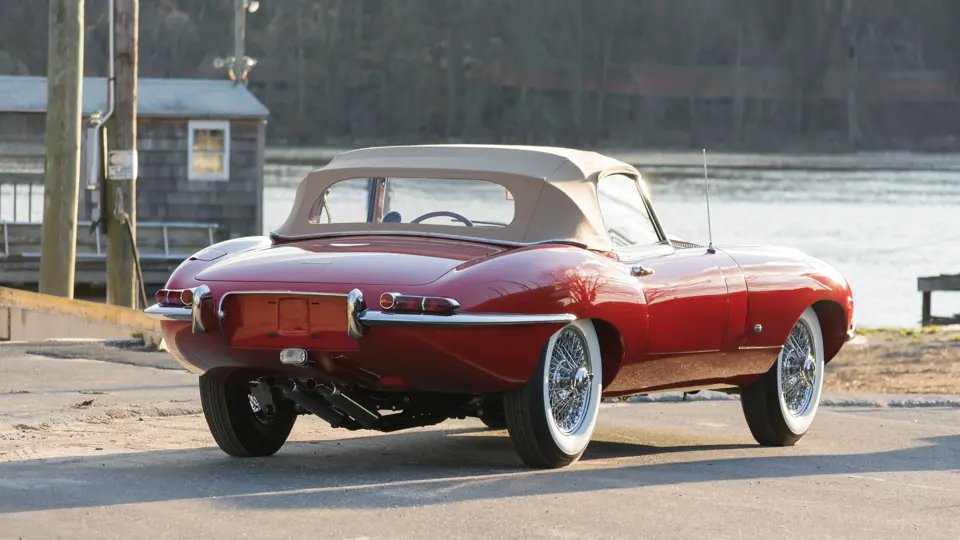




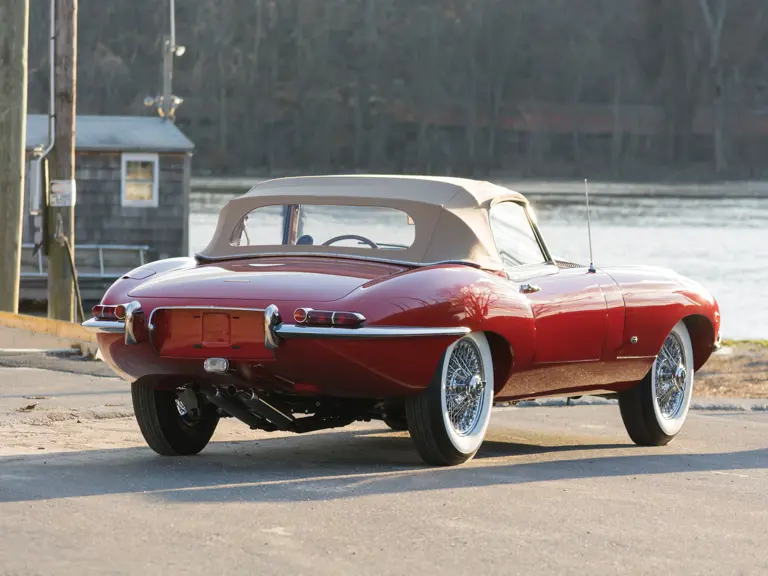



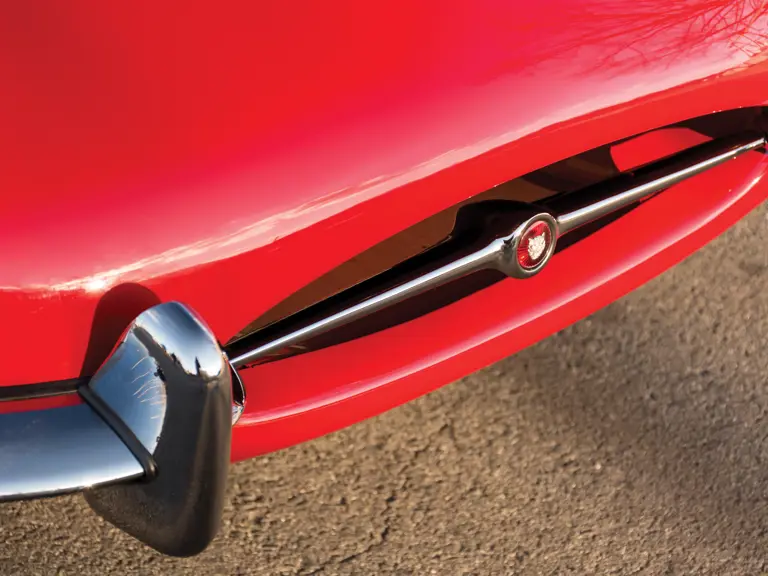
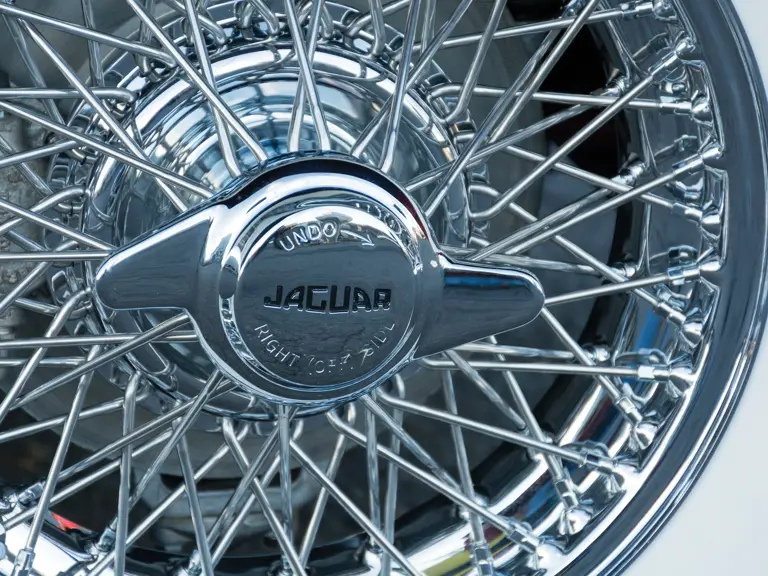
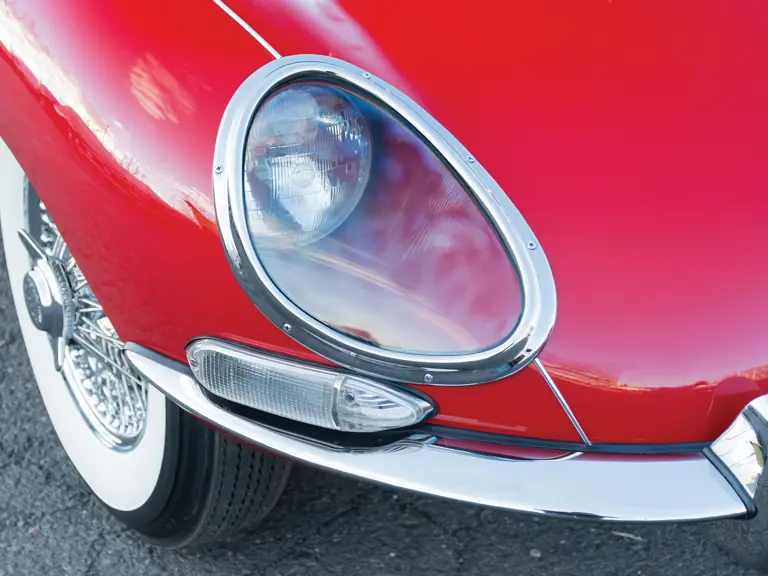





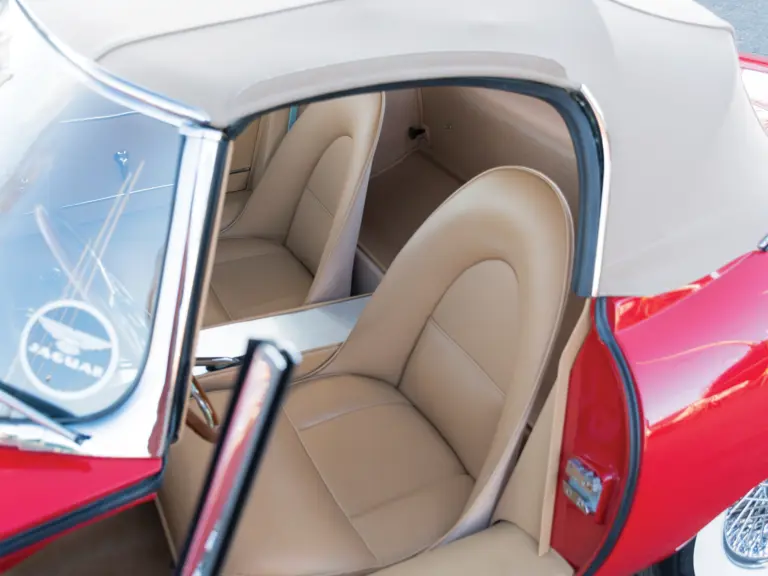
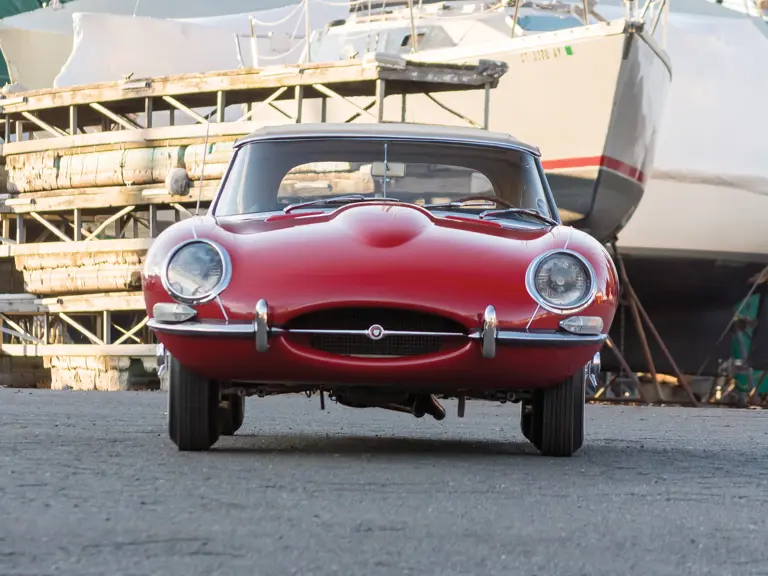
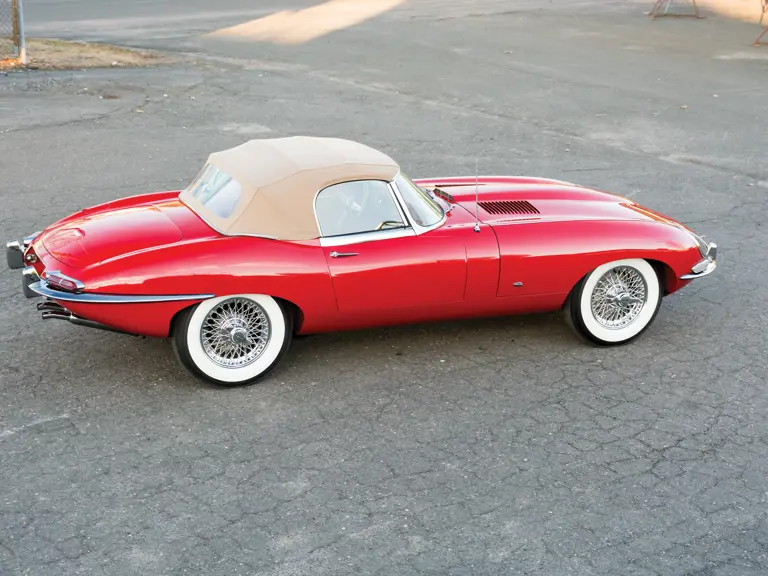

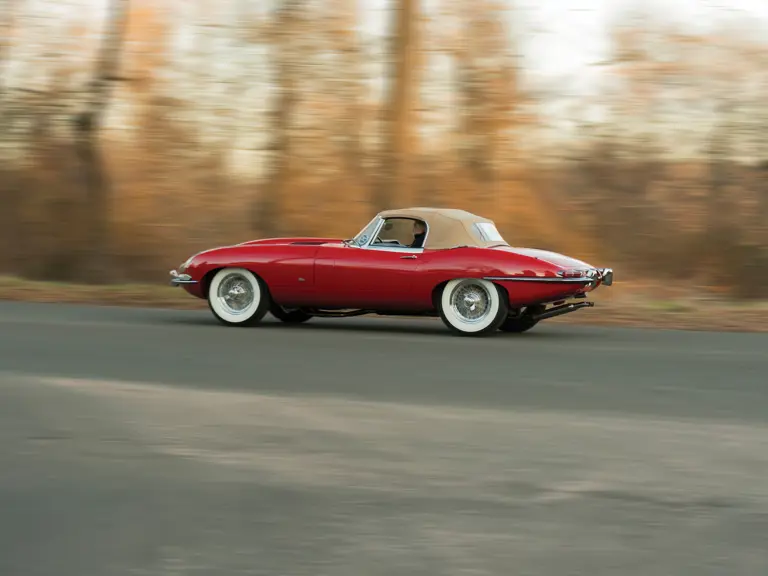
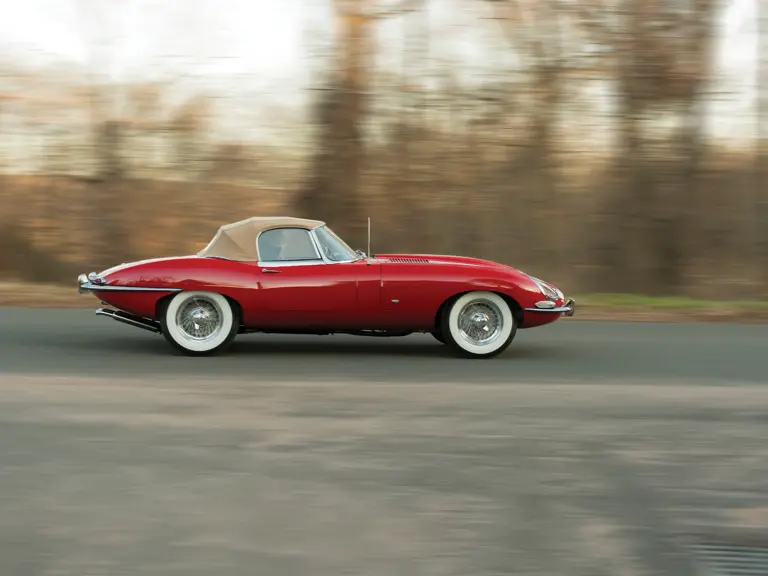

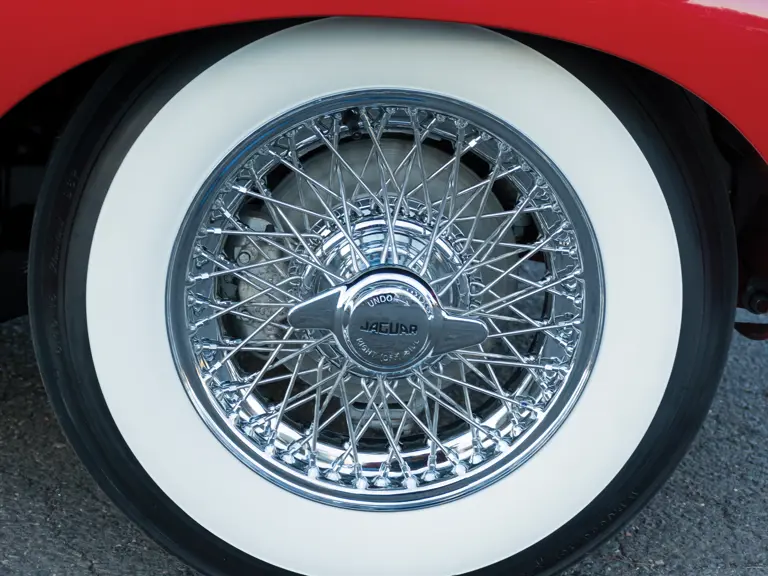
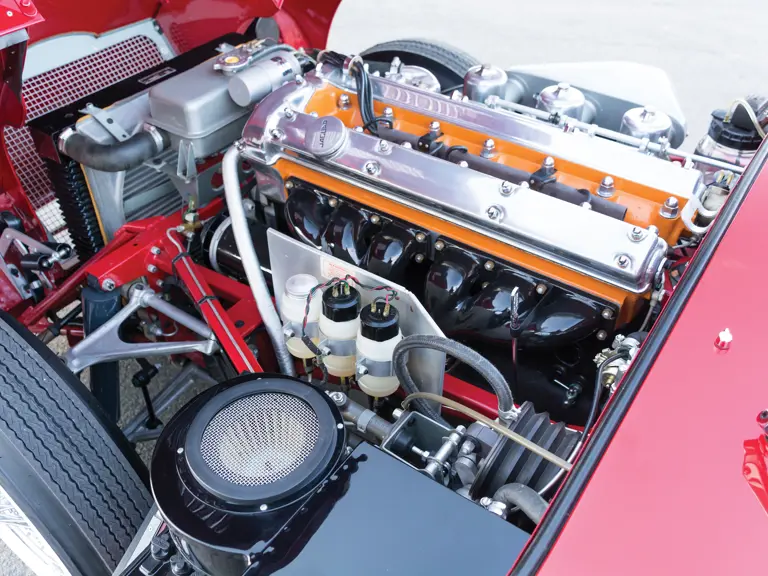
 | Amelia Island, Florida
| Amelia Island, Florida
